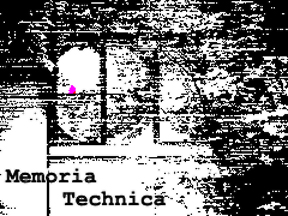|
|
bits and pieces December 28, 2001 |
|||||||
|
|
||||||||
|
This Year's Bird
Sightings Today's Reading This Year's Reading |
|
|
Bits, pieces, fragments, loose ends, and random junk clutter up this entry like they do my mind. Napping With respect to that early December entry about a nap before dinner, a search on Dostoevsky and nap turned up a biographical note that jibes with my vague memory that the nap connection was with Dostoevsky's father. I didn't find anything suggesting that Dostoevsky himself napped before or after dinner. Poetry fragments Here are the long-awaited sources for the (non-Phillis Wheatley) poetry fragments bouncing around in the November 22 entry:
The new Red Sox owners From New York?! Own parts of a couple of other baseball teams including those pinstriped ones from the Bronx?! This can't be good. Exactly why is it that baseball is exempt from antitrust laws? Bad enough the New York Times owns the Boston Globe, now they own the Red Sox!?! Yikes. FYI: According to the press release, the John Henry Group includes the aforementioned John Henry former owner of the Florida Marlins, TV producer and former owner of the San Diego Padres Tom Werner, former U.S. Senator George Mitchell, Larry Lucchino, Les Otten, Ben Cammarata, Ed Eskandarian, Arthur Nicholas, Marty Trust and the New York Times Company. The part about one of them owning part of the Yankees I heard on NPR. Since I also heard on NPR that Macy's bought Filene's - as part of their story on how New York institutions have been consuming Boston institutions - when we all know what they bought was Jordan Marsh, I'm not sure I can believe those NPR folks anymore. But whatever other teams these guys own, it still smacks of "interlocking directorates" or something like we learned about in high school history class. Geeks I was going to write something about the Wired article on Asperger's Syndrome but noticed that Ceej already has. The purported relationship between geekiness and autism has been niggling at the upper left hand corner of my mind for a couple of years, ever since I heard Temple Grandin interviewed on Fresh Air about her book Thinking In Pictures. Grandin is a high-functioning autistic woman who designs machines for slaughtering cattle. Oliver Sacks, the famous neurologist, wrote about her in one of his books and started this whole thing about "thinking in pictures" being associated with autism. It has bugged me ever since, because as far as I can tell the widespread notion that people who think in pictures are somewhere on the spectrum of autism is based on two data points: Temple Grandin and another high-functioning autistic woman named Donna Williams (these two are cited in the Wired article too). Has anybody studied how common thinking in pictures is among non-autistic people? Don't artists think in pictures? In what way are artists like engineers? Wouldn't you hope that, say, civil engineers think in pictures? What about architects? What about mechanical engineers? What about precision machinists or even cabinetmakers? Then there's the whole "systematizing things is pathological" thing too. Wouldn't that mean that all taxonomists have autism? Was Linneaus autistic? If so, is that a net loss or a net gain for western civilization as a whole? By the way, on the subject of Temple Grandin, has it occurred to anybody else that if she really had developed empathy with cattle (which is the way her affinity is often described) she might not want to be developing better and better ways of killing them? OK, that was just my gratuitous animal-loving dysfunction coming out, but it is kind of weird. I could go on for gigabytes about why two cases doesn't make a correlation in the thinking in pictures thing and why a study showing that 12% of the fathers (they only studied the fathers) of autistic kids are engineers doesn't prove a correlation with engineering either. What did the other 88% of the fathers do? Has anybody studied whether the clustering of autism cases in Silicon Valley is replicated in other (current and former) computer industry strongholds like Redmond, WA or Austin or Rt. 128 or Novosibirsk? What about other types of technological enclaves like Los Alamos or Cape Canaveral? I have way more questions than answers and I realize that if I really want to tackle the Wired article, I should summarize each point and make my case about each questionable assumption systematically. But wait, if I do it systematically does that mean ...? |
|||||
|
|
|
Copyright © 2001, Janet I. Egan |
|||||
